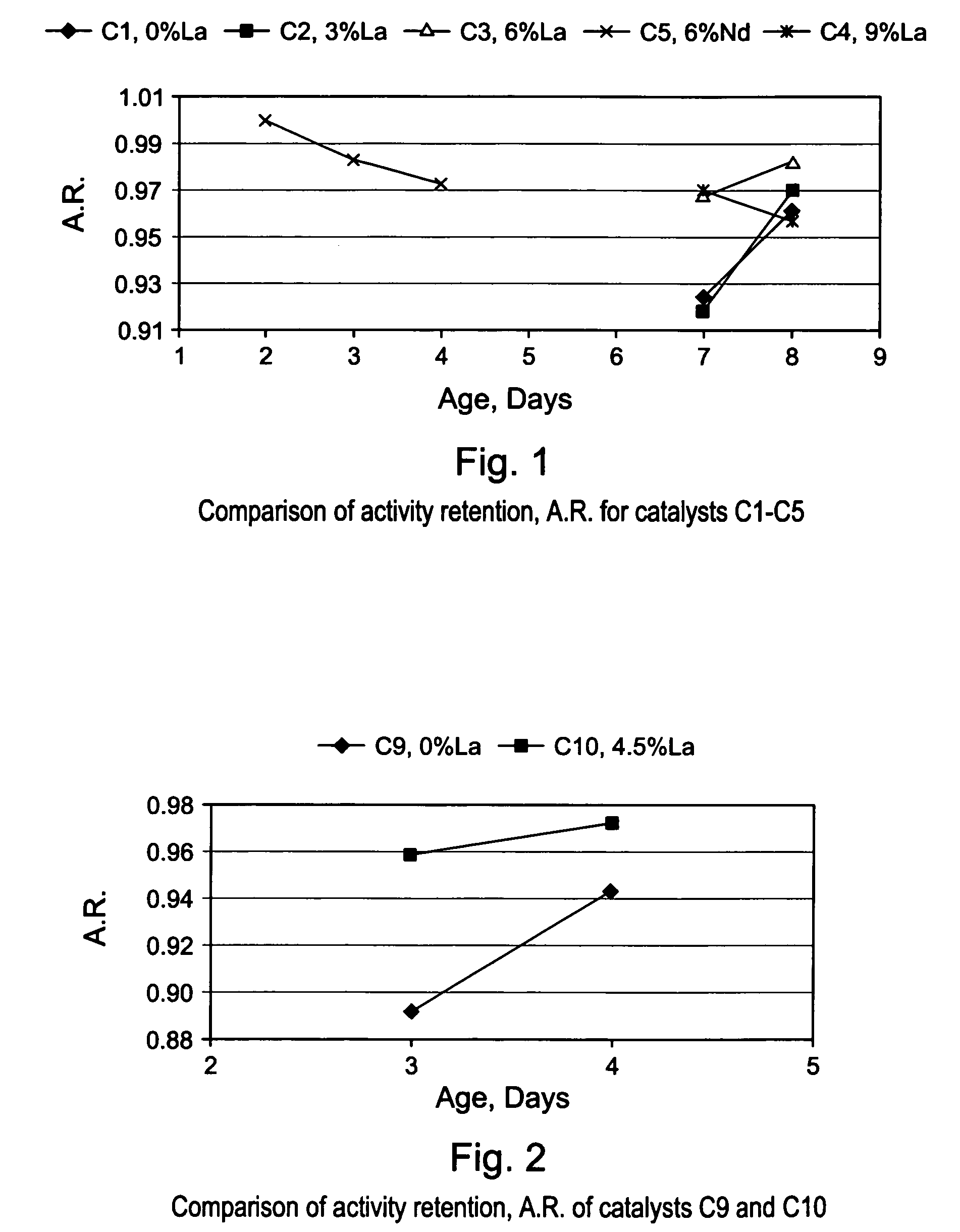Chemically and thermally stabilized alumina for Fischer-Tropsch catalysts
a technology of fischer-tropsch catalyst and alumina, which is applied in the direction of physical/chemical process catalyst, organic compound/hydride/coordination complex catalyst, other chemical processes, etc., can solve the problems of slow and continuous loss of surface area, slow conversion to other polymorphs with much lower surface area, and significant amount of gaseous water in reactors utilizing cobalt-based catalysts
- Summary
- Abstract
- Description
- Claims
- Application Information
AI Technical Summary
Benefits of technology
Problems solved by technology
Method used
Image
Examples
examples
Catalyst Supports
example s1
Unmodified Alumina Support
[0085]Gamma-Alumina from SASOL (trademark Puralox SCCa 5 / 150) in microspheric particulates of average size of about 100 μm, was used as a control for comparison only, hereinafter identified as EXAMPLE S1. This alumina support is further characterized by a low sodium content (about 0.002 wt % Na2O).
examples s2 –
Examples S2–S6
Lanthanum-Modified Alumina Supports
[0086]The gamma-alumina starting material used to make the support of EXAMPLE S1 (Puralox SCCa 5 / 150 from SASOL) was used to make a series of lanthanum-modified alumina supports, hereinafter identified as EXAMPLES S2–S6. The modified supports of EXAMPLES S2–S6 were made by impregnation of gamma-alumina microspheres with an aqueous solution of a lanthanum (La) precursor, i.e., lanthanum nitrate hexahydrate [La(NO3)3 6H2O], to afford an impregnated support. Each impregnated support was then dried in an oven at 120° C. overnight, and calcined for 2 hours at 1,000° C., or at 1,100° C. The concentration of La(NO3)3 6H2O in the aqueous solution was selected in order to achieve different lanthanum loadings of 3; 4.5; 6; and 9% respectively, wherein the percentages are measured by weight of lanthanum in the final La-modified alumina support (La-Al2O3). The La content of the alumina support and the calcination temperature used for making EXAMP...
PUM
| Property | Measurement | Unit |
|---|---|---|
| thickness | aaaaa | aaaaa |
| thickness | aaaaa | aaaaa |
| temperature | aaaaa | aaaaa |
Abstract
Description
Claims
Application Information
 Login to View More
Login to View More - R&D
- Intellectual Property
- Life Sciences
- Materials
- Tech Scout
- Unparalleled Data Quality
- Higher Quality Content
- 60% Fewer Hallucinations
Browse by: Latest US Patents, China's latest patents, Technical Efficacy Thesaurus, Application Domain, Technology Topic, Popular Technical Reports.
© 2025 PatSnap. All rights reserved.Legal|Privacy policy|Modern Slavery Act Transparency Statement|Sitemap|About US| Contact US: help@patsnap.com



